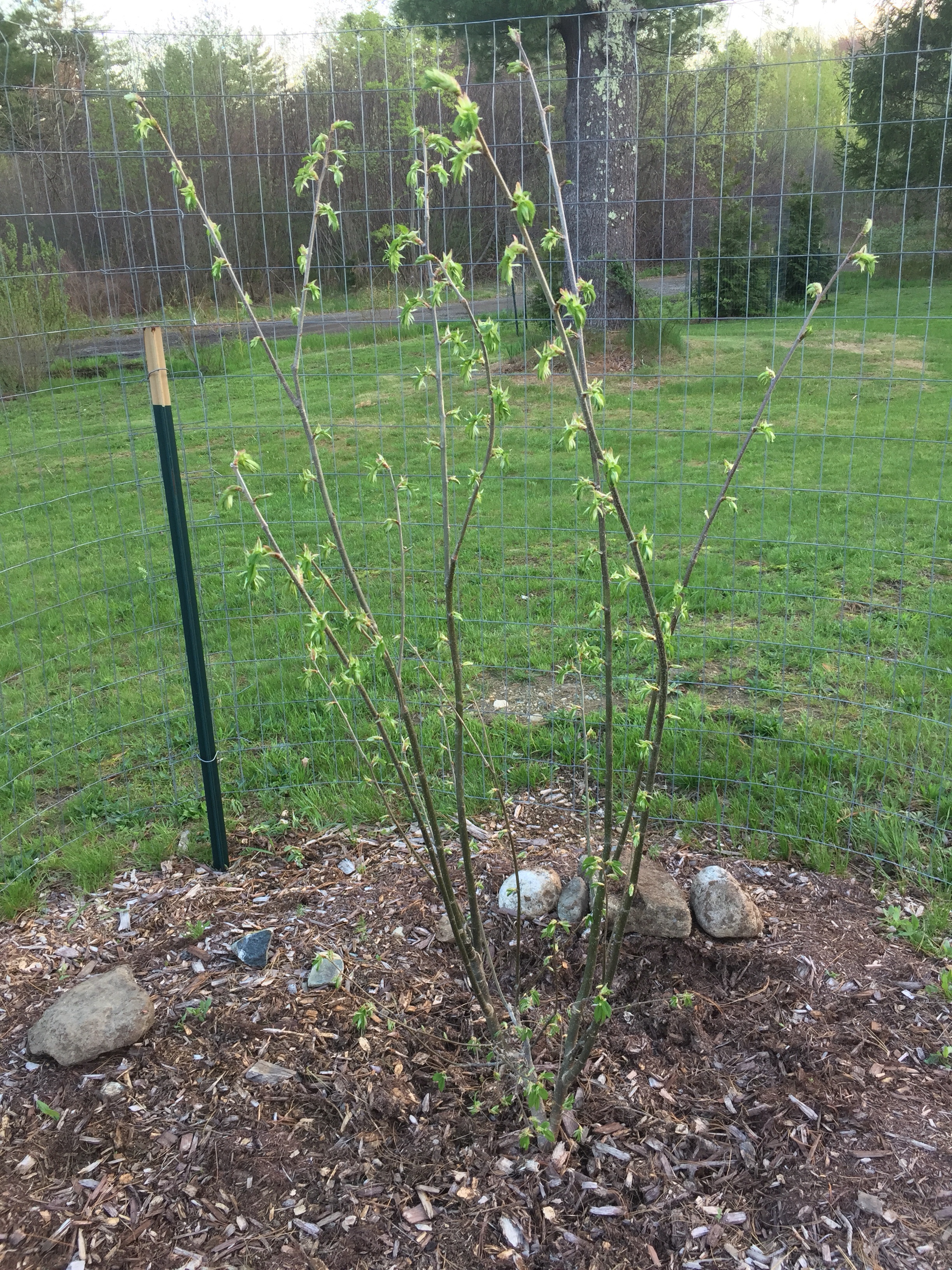Can’t believe this area used to be all knotweed! On left, Princeton elm, center, river birches, and at right (flowering) is one of my favorite shrubs, highbush cranberry (Viburnum trilobum).
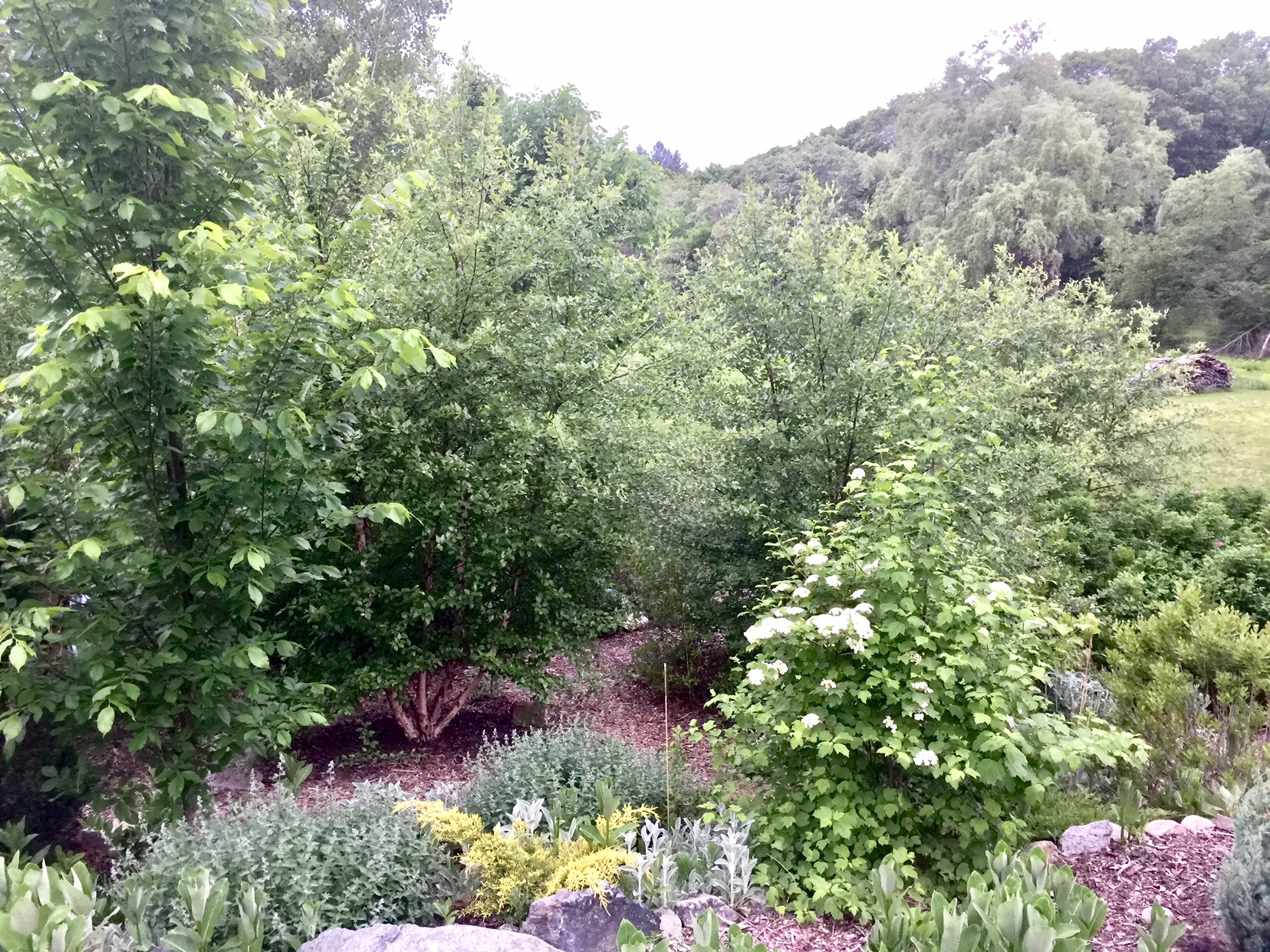
Can’t believe this area used to be all knotweed! On left, Princeton elm, center, river birches, and at right (flowering) is one of my favorite shrubs, highbush cranberry (Viburnum trilobum).

This may not look like much, but it’s important. The plants immediately bordering the pond (dogwoods, pussy willows, elm) remain unmowed for the winter. A strip that contained some wildflowers (milkweeds, asters, daisies, goldenrods, etc.) yet also some invasives (mainly field bindweed, or mile-a-minute) benefits from being mowed.
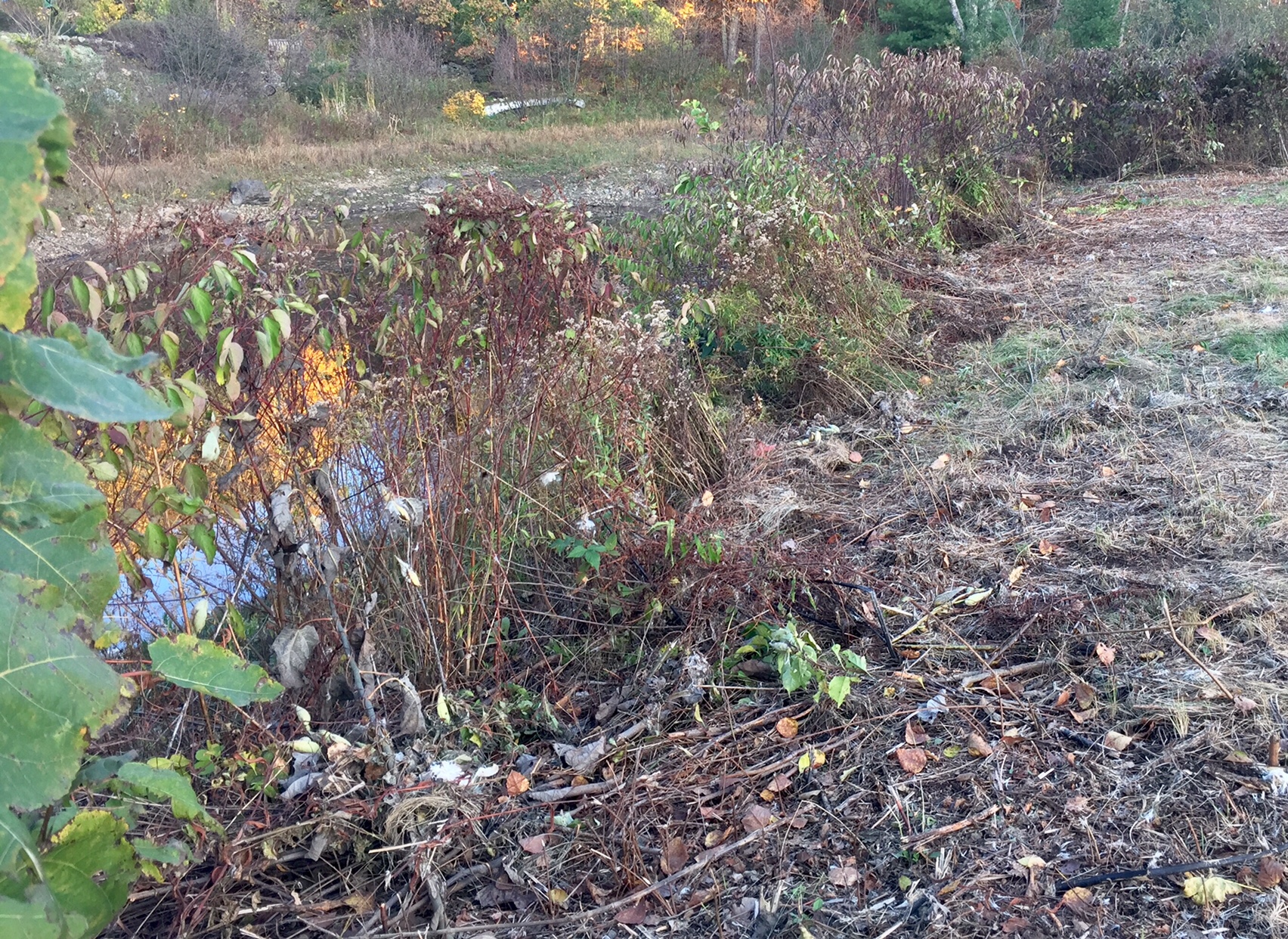
Over on the other end of the pond, a bunch of existing dogwood shrubs needed dividing, so we transplanted them here, to back up the milkweeds. In front of the milkweeds are little bluestem, big bluestem, aster and fern divisions. A young Princeton elm anchors the far end of the “river.”
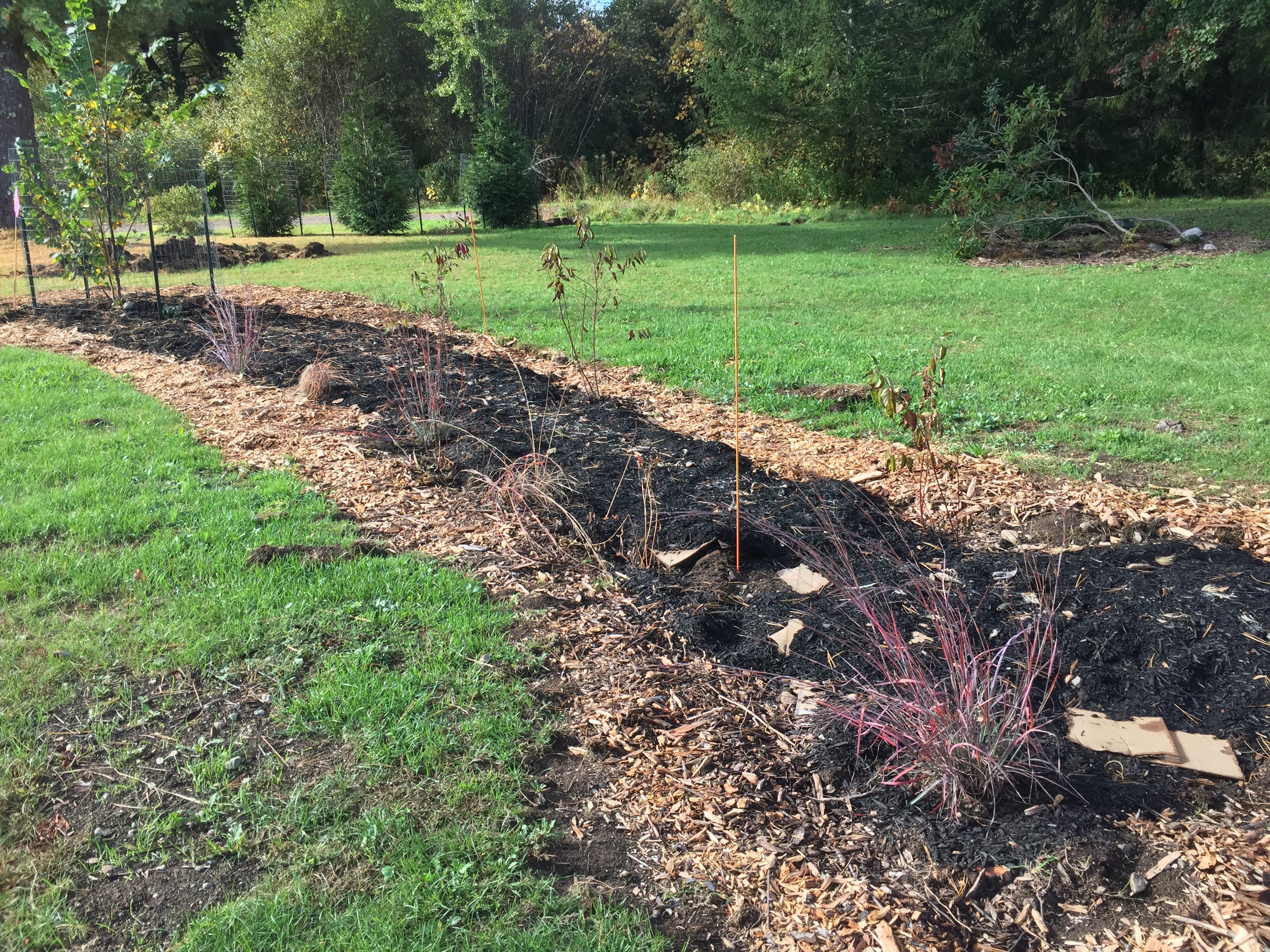
On the left, variegated red-twig dogwood backed by white pine, in turn backed by quaking aspen. In center are yellow leaves of river birch. Moving right, a shrubby green magnolia contrasts with the brilliant red leaves of Rhus typhina (staghorn sumac). Above the sumac in the background, branches of a Princeton elm can be seen reaching toward the blue sky.
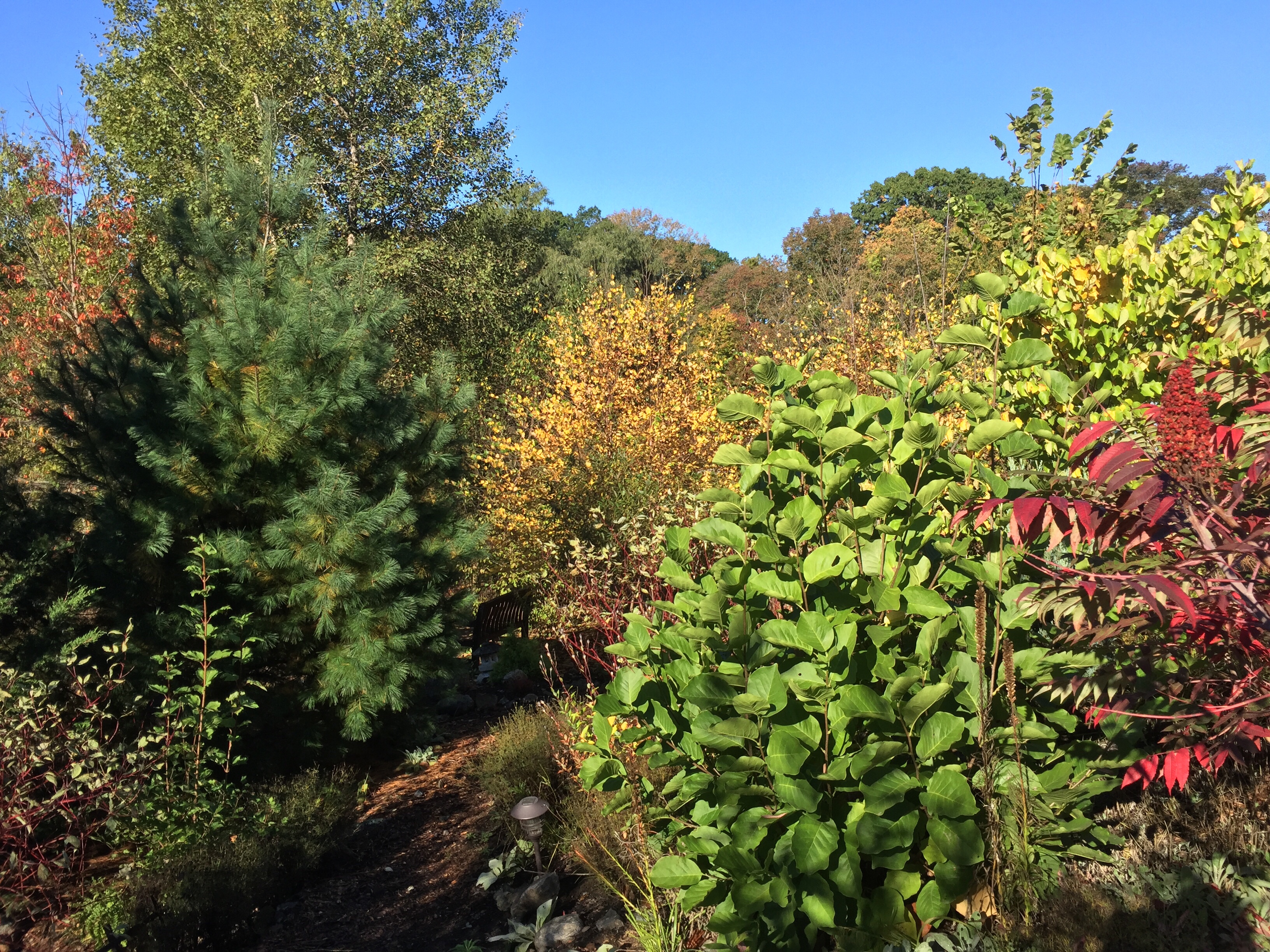
It’s just unbelievable that this area was once the thickest area of the densest, deepest and most monstrous Japanese knotweed rhizomes I’ve ever seen, over 8′ tall. You could not walk through it or see through it.
Now, it’s planted with a grove of Betula nigra (river birch) and one Ulmus americana (Princeton elm). The cedar, juniper and pines in the background are very happy also. Walker’s Low catmint loves the sunny slope. My favorite, though, is the Asclepias syriaca (common milkweed), in the foreground. Years ago, I scattered seed in this area, and it’s still coming up.
I don’t think of common milkweed as a weed at all. It’s beautiful, it has great architecture and its scent is heavenly. It does great things for insects (hence birds also) and butterflies. Last year when we had a resident groundhog family, the young shoots were their favorite food. Once we had milkweed coming up, the groundhogs left our salvias alone!

This Princeton elm tree developed a shrubby form, due to deer browsing. I’ll try to develop a central leader over the next few years, however, it’ll be a challenge. At least it’s growing, now that it’s finally protected by some wire.
